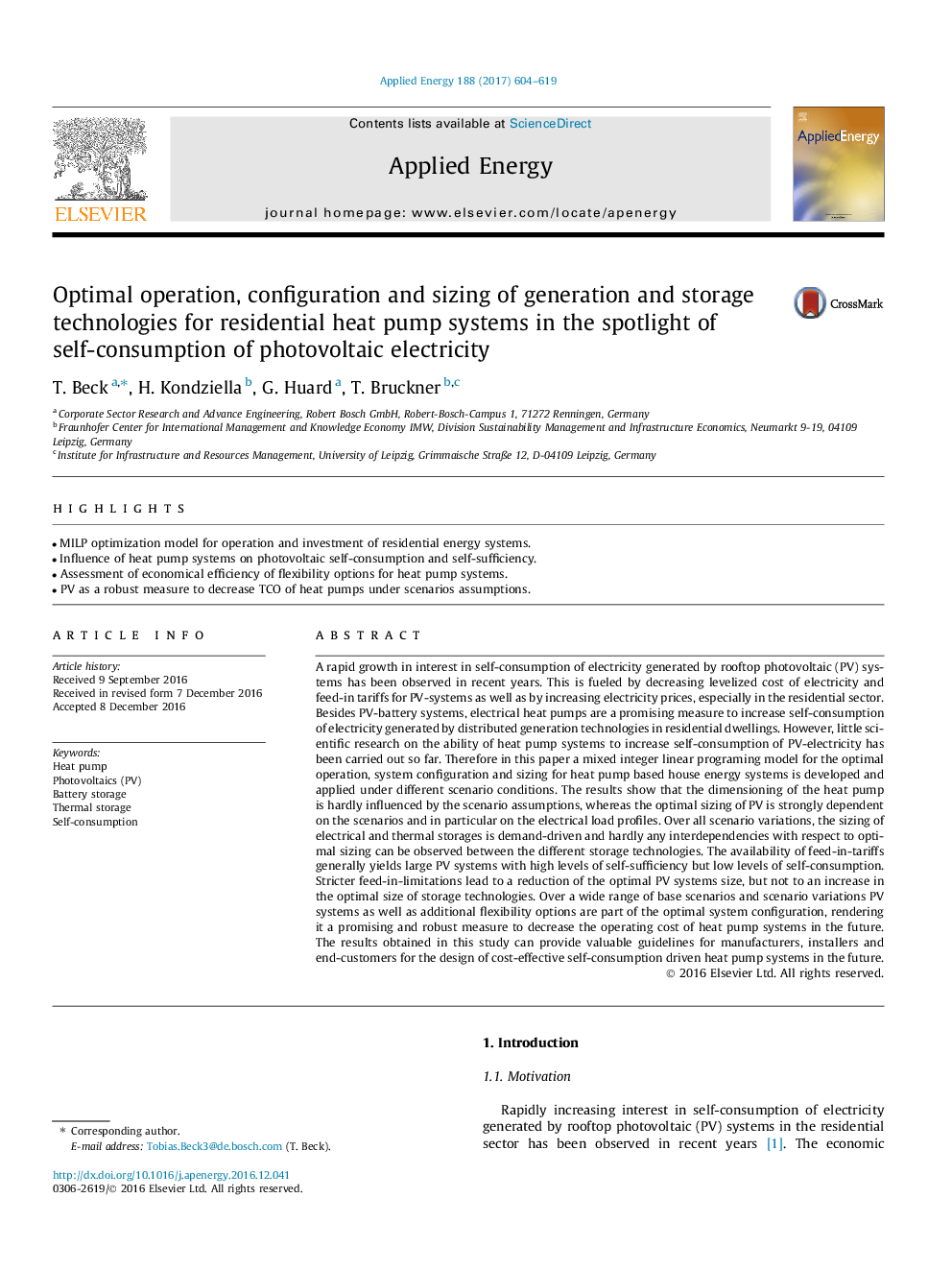| کد مقاله | کد نشریه | سال انتشار | مقاله انگلیسی | نسخه تمام متن |
|---|---|---|---|---|
| 4911161 | 1428102 | 2017 | 16 صفحه PDF | دانلود رایگان |
عنوان انگلیسی مقاله ISI
Optimal operation, configuration and sizing of generation and storage technologies for residential heat pump systems in the spotlight of self-consumption of photovoltaic electricity
ترجمه فارسی عنوان
عملیات بهینه، پیکربندی و اندازه گیری فن آوری های تولید و ذخیره سازی برای سیستم های پمپ حرارتی مسکونی در فوکوس خودکار مصرف برق فتوولتائیک
دانلود مقاله + سفارش ترجمه
دانلود مقاله ISI انگلیسی
رایگان برای ایرانیان
کلمات کلیدی
موضوعات مرتبط
مهندسی و علوم پایه
مهندسی انرژی
مهندسی انرژی و فناوری های برق
چکیده انگلیسی
A rapid growth in interest in self-consumption of electricity generated by rooftop photovoltaic (PV) systems has been observed in recent years. This is fueled by decreasing levelized cost of electricity and feed-in tariffs for PV-systems as well as by increasing electricity prices, especially in the residential sector. Besides PV-battery systems, electrical heat pumps are a promising measure to increase self-consumption of electricity generated by distributed generation technologies in residential dwellings. However, little scientific research on the ability of heat pump systems to increase self-consumption of PV-electricity has been carried out so far. Therefore in this paper a mixed integer linear programing model for the optimal operation, system configuration and sizing for heat pump based house energy systems is developed and applied under different scenario conditions. The results show that the dimensioning of the heat pump is hardly influenced by the scenario assumptions, whereas the optimal sizing of PV is strongly dependent on the scenarios and in particular on the electrical load profiles. Over all scenario variations, the sizing of electrical and thermal storages is demand-driven and hardly any interdependencies with respect to optimal sizing can be observed between the different storage technologies. The availability of feed-in-tariffs generally yields large PV systems with high levels of self-sufficiency but low levels of self-consumption. Stricter feed-in-limitations lead to a reduction of the optimal PV systems size, but not to an increase in the optimal size of storage technologies. Over a wide range of base scenarios and scenario variations PV systems as well as additional flexibility options are part of the optimal system configuration, rendering it a promising and robust measure to decrease the operating cost of heat pump systems in the future. The results obtained in this study can provide valuable guidelines for manufacturers, installers and end-customers for the design of cost-effective self-consumption driven heat pump systems in the future.
ناشر
Database: Elsevier - ScienceDirect (ساینس دایرکت)
Journal: Applied Energy - Volume 188, 15 February 2017, Pages 604-619
Journal: Applied Energy - Volume 188, 15 February 2017, Pages 604-619
نویسندگان
T. Beck, H. Kondziella, G. Huard, T. Bruckner,
